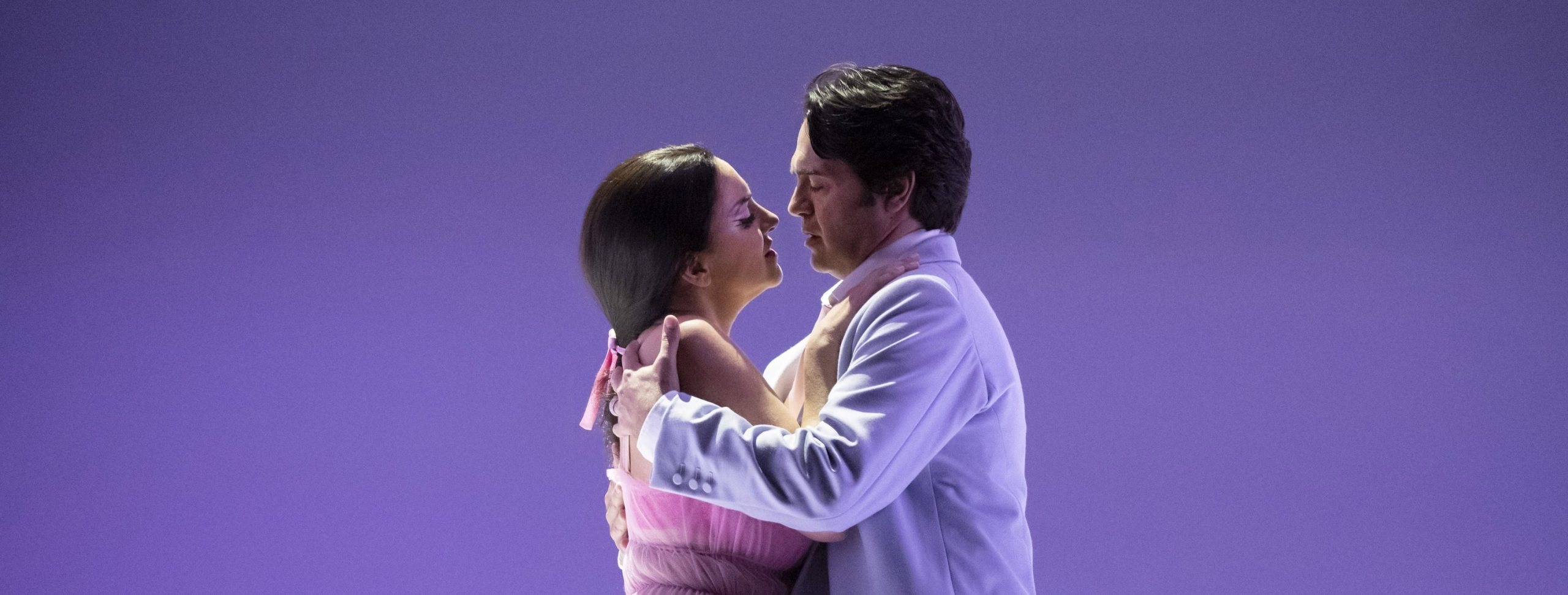
Deputy Editor Jasmine Sandhar reviews Madam Butterfly, mentioning her disappointment in the choice of a colour-blind casting but praising the overall production
After seeing classics such as Richard Strauss’ Elektra in Vienna and Giuseppe Verdi’s Aida in Verona, I had a rather conventional expectation for the Welsh National Opera’s production of Giacomo Puccini’s Madam Butterfly. Indeed, when I casually mentioned to my undergraduate peers that I was going to the opera, there was a flood of laughter interrupted with teasing remarks about elitist behaviour.
In some ways they were not wrong – although it is not as opulent as the Wiener Staatsoper or the Arena di Verona, the Birmingham Hippodrome is still filled with the stereotypical golden sparkling chandeliers, crimson velvet trimmings and older, white, well-to-do audience members. However, under the direction of Lindy Hume, Madam Butterfly has metamorphosed from an outdated history that seems so far removed from our time to an innovative retelling of events that captures the essence of the former in a modern setting.
“Madam Butterfly has metamorphosed from an outdated history that seems so far removed from our time to an innovative retelling of events that captures the essence of the former in a modern setting
This is established from the very outset with the first half of Act One resembling a sequence that seems to have come from straight out of Hairspray; lines of ladies in white skater dresses and knee-high GoGo boots prance around B.F. Pinkerton (Leonardo Caimi) with heart-shaped hand signals and garish pink, curly wigs. In fact, their harmonious uniformity in appearance was rather redolent of the Oompa Loompas from Tim Burton’s Charlie and the Chocolate Factory, though it must be noted that their singing and dancing was not quite as in-time or together. Nevertheless, the sixties chaos began to calm down when Cio-Cio-San (Joyce El-Khoury) enters, adorned in a wedding veil and followed by a procession of relatives (who later renounced her for converting to Christianity) and the light box surrounding the stage gloriously erupted with projections of butterflies varying in shape and colour. The beautiful innocence of this moment is notably juxtaposed with the sensual scene at the end of the act, representing Pinkerton’s corruptive success in exploiting a vulnerable 15-year-old girl.
From there on out, Acts Two and Three were nothing short of Shakespearean tragedy: Cio-Cio-San remained in a constant state of depression, imprisoned in her chic two-tier condo – like a butterfly trapped in a collector’s jar – and unable to move on from her abandonment. Suzuki (Anna Harvey) was tormented by her commitment to her madam, conflicted between whether to spare Cio-Cio-San psychological trauma whilst also trying to ground her in reality, and Sharpless (Mark Stone) was so emotionally distressed that he often was left speechless.
This was further heightened by the interspersal of heart-breaking moments of pure innocence, such as when the child hand-painted red flowers on the white walls of the house and the famous Il cannone del porto! duet (which is harmonically reminiscent of Lakme’s Flower Duet) that was sung by the two female protagonists in utter solidarity. Yet, despite these flickers of hope, everything remained on a downward spiral, coming to a head at the abyss of Butterfly’s suicide, as indicated by a bloodied curtain that circled around the stage once but most definitely remained running around the minds of the audience for much longer. Interestingly, Hume veered away from the original ending of the opera, choosing to remove the child completely from the set and have Cio-Cio-San write ‘HONOR’ (note the American spelling) in red lipstick above her bed in replacement of the US flag – a deliberate political move, in my opinion, given the sexual abuse, manipulation and subjugation of women across not only America but the rest of the globe too, as highlighted by the #MeToo movement.
“Given this social commentary, it was disappointing to see that a colour-blind cast had been chosen
Given this social commentary, it was disappointing to see that a colour-blind cast had been chosen. Whilst I can understand how removing the plot from time and place is valuable in expanding the scope of relevancy and universality of the work, I still believe that it was a profound mistake. The initial setting of Japan in the pre-World War II period is essential to understanding the legacies of colonialism and how, despite its overlook, there was an American empire that existed and profited off the political and economical control of other countries.
Furthermore, if Hume was attempting to highlight some of the feminist themes I outlined above, surely having a Japanese vocalist as the main lead would add an extra dimension to this in terms of providing an intersectional interpretation – if we take a Marxist approach, it is clear to see how the underlying capitalist substructures of colonialism are inherently linked to the targeted oppression of women from minority backgrounds. Moreover, in this current media age of rising representation for Asian creatives, this intentional decision from the director seems especially regressive.
Nevertheless, Madam Butterfly’s overall production was thoroughly enjoyable to watch. The WNO’s orchestra was incredible under the direction of enthusiastic Conductor Laureate Carlo Rizzi, sustaining the colours and tones needed to support the singers, who did not fail to deliver powerful and fresh renditions of iconic arias, thus doing justice to Puccini’s musical genius.
Enjoyed this? Read more on Redbrick Culture!

Comments